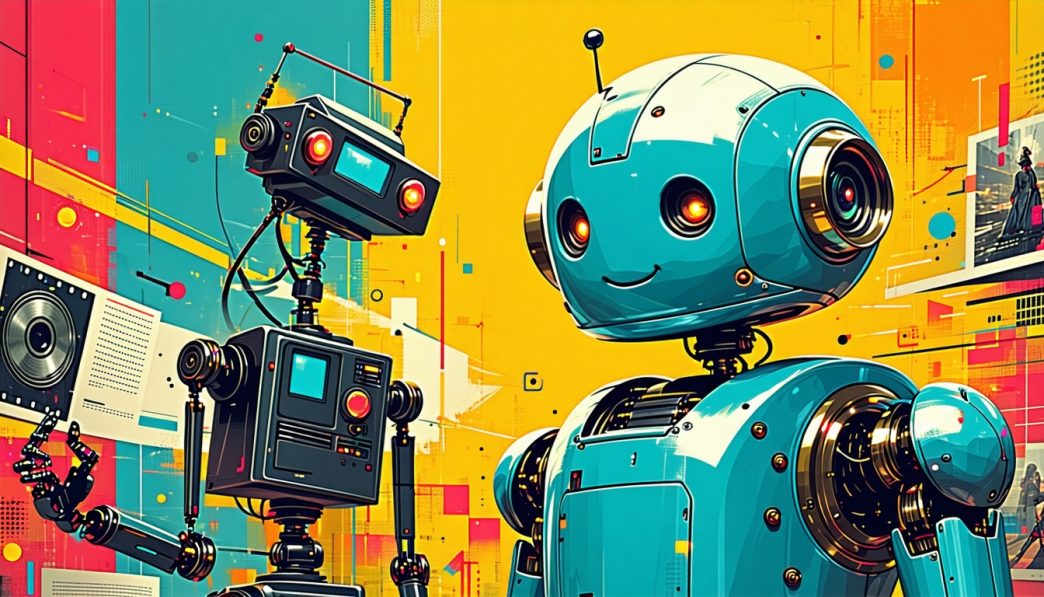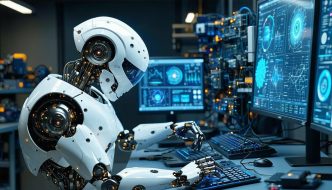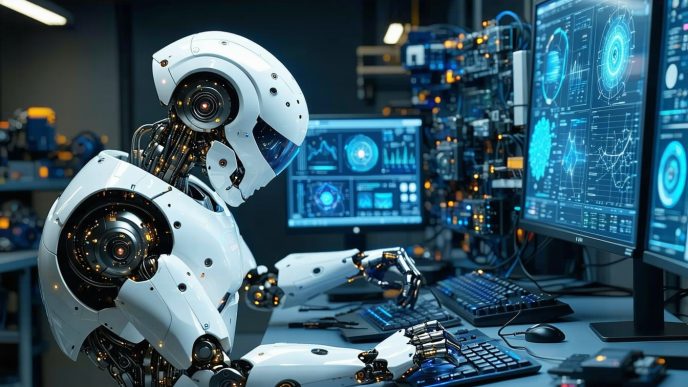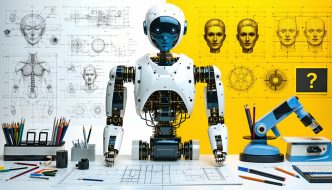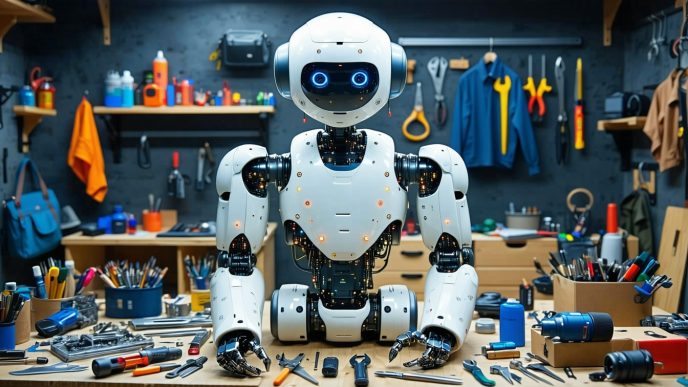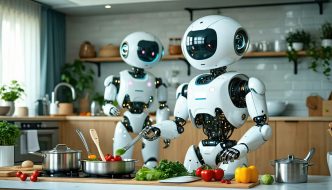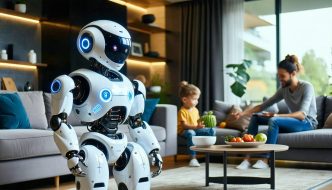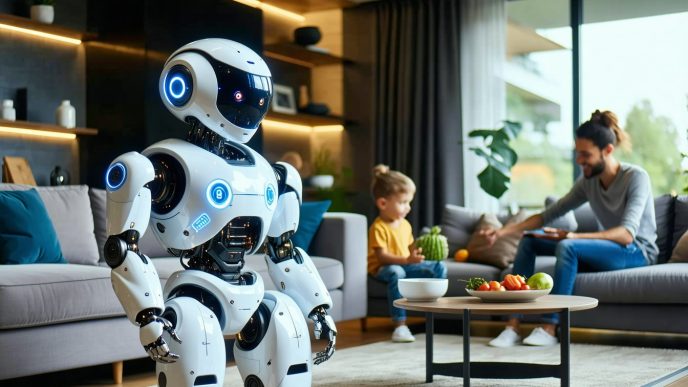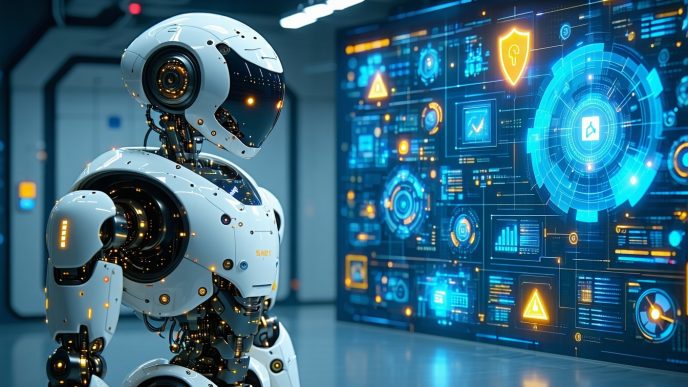Evolution of Humanoid Robots in Pop Culture
Introduction to Humanoid Robots
Humanoid robots are designed to resemble the human form and often mimic human behaviors and actions. These robots capture the imagination of many, playing significant roles in both society and culture. From futuristic applications in industries to their presence in entertainment, humanoid robots have evolved considerably since their inception. They provide insights into our expectations regarding robotics and the technological advancements that accompany them.
Influence of Science Fiction on Humanoid Robot Depictions
Science fiction has significantly shaped the portrayal and understanding of humanoid robots in pop culture. Early depictions established foundational concepts that continue to inform current perspectives, stimulating public interest and curiosity.
| Era | Influential Work | Key Themes |
|---|---|---|
| Early 20th Century | Metropolis | The idea of robots as laborers and their potential for sentience |
| Mid 20th Century | I, Robot | Ethical dilemmas surrounding the use of robots and their integration into society |
| Late 20th Century | Blade Runner | The blurring lines between human and robotic identities |
| 21st Century | Westworld | Exploration of consciousness, autonomy, and the implications of AI |
The advancements in media content have augmented public fascination with humanoid robots, highlighting their capabilities and potential futures. Each generation of sci-fi has introduced fresh ideas, stirring conversations about human-like robots and their roles in everyday life. The expectations formed from these portrayals heavily influence how society perceives the development of actual humanoid robots, such as those designed for humanoid robots for home use.
As creative narratives continue to evolve, they impact the trajectory of technology and society’s acceptance of these advanced machines, merging fiction with reality in an intriguing journey toward humanlike automation.
Early Sci-Fi Representations
The portrayal of humanoid robots began long before today’s advanced iterations, with their narratives deeply rooted in classic literature and early films. These representations have significantly influenced modern perceptions of what humanoid robots could become.
Robots in Classic Literature
Classic literature has provided early insights into the concept and functionality of humanoid robots. Notably, works such as Karel Čapek’s R.U.R. (Rossum’s Universal Robots) introduced the term “robot” and set the stage for discussions about human-like machines. These robots were depicted as artificial beings created to serve humans but ultimately led to unexpected consequences and ethical dilemmas.
| Literary Work | Author | Year | Key Themes |
|---|---|---|---|
| R.U.R. | Karel Čapek | 1920 | Creation, rebellion, human-robot relations |
| Metropolis | Thea von Harbou | 1925 | Class struggle, machines vs. humans |
| The Caves of Steel | Isaac Asimov | 1954 | Human and robot coexistence, robotics ethics |
Classic literature not only shaped the narrative of humanoid robots but also raised questions about autonomy, morality, and societal impacts.
Robots in Early Films and TV Shows
The influence of humanoid robots extended into early films and television shows where they were depicted both as companions and threats. From the classic 1927 film Metropolis, featuring a robot named Maria, to the 1960s series Star Trek with its android character Mr. Data, these portrayals captivated audiences and ignited imagination.
| Film/Show | Year | Robot Character | Notable Attributes |
|---|---|---|---|
| Metropolis | 1927 | Maria | Resembles human, serves as a symbol of revolution |
| Forbidden Planet | 1956 | Robby the Robot | Capable of complex tasks, protective of humans |
| Star Trek | 1966 | Mr. Data | Advanced AI, emotional growth, human-like features |
Early sci-fi on screen reflected society’s hopes and fears regarding technological advancements and human-like machines. These depictions laid the groundwork for current discussions on the role of humanoid robots in pop culture and their integration into daily life. The evolution from simple machines to sophisticated robots continues to shape public expectations and scientific developments today.
Modern Sci-Fi Portrayals
Modern science fiction has significantly shaped perceptions and expectations around humanoid robots, blending imaginative narrative with emerging technological realities.
Impact of Modern Science Fiction on Humanoid Robots
Contemporary sci-fi narratives frequently explore themes of artificial intelligence, robotics, and their integration into society. These portrayals influence audience expectations regarding humanoid capabilities and their potential roles in daily life. Characters like those in films and series offer a glimpse into what humanoid robots might achieve in the near future, inspiring real-world innovations.
The depiction of humanoid robots in modern media often encompasses advanced AI, emotional intelligence, and physical capabilities similar to humans. This influence is evident in developing technologies such as voice interfaces in humanoid robots, enhanced robotic locomotion systems, and sophisticated emotion recognition in robots.
Popular Films and TV Series Depicting Humanoid Robots
Several influential films and television series have portrayed humanoid robots, shaping cultural perceptions. Below is a table highlighting some key titles, their year of release, and central themes related to humanoid robots.
| Title | Year Released | Central Themes |
|---|---|---|
| Blade Runner | 1982 | AI consciousness and ethics |
| Ex Machina | 2014 | AI sentience and human-like behavior |
| Westworld | 2016 | Memory, identity, and ethical dilemmas |
| Humans | 2015 | Human-robot coexistence and social impact |
| Altered Carbon | 2017 | Identity and the essence of humanity |
These works demonstrate the intersection of technology and humanity, often projecting future scenarios that propel scientific advancement. Characters from these narratives can be linked to current developments in humanoid robotics, such as the emerging Tesla Optimus robot and the Sanctuary AI Phoenix.
As modern sci-fi continues to influence perceptions, it is essential to recognize how such portrayals inform public expectations about the future of humanoid robots, presenting both opportunities and challenges for developers as they create increasingly sophisticated robotic companions for various applications, from education to companionship.
Expectations vs. Reality
The portrayal of humanoid robots in pop culture has created high expectations for their capabilities and appearances. However, the reality of current humanoid robotics often differs from these fictional depictions.
Discrepancies between Sci-Fi Depictions and Real Humanoid Robots
In science fiction, humanoid robots often possess advanced features like human-like intelligence, complex emotional responses, and seamless interaction abilities. These characteristics create a vision of robots that can engage in conversations, process emotions, and integrate into daily life with ease. In contrast, real humanoid robots are still in nascent stages of development, facing various limitations.
The following table outlines some key differences between sci-fi representations and current humanoid robots:
| Feature | Sci-Fi Representation | Real Humanoid Robots |
|---|---|---|
| Intelligence | Self-aware, advanced AI | Rule-based, limited AI |
| Emotional Understanding | Empathetic, intuitive | Basic response systems |
| Physical Appearance | Flawless human likeness | Mechanical, limited realism |
| Human Interaction | Natural, conversational | Limited dialogue, structured |
| Mobility | Fluid, athletic movements | Basic locomotion control |
While humanoid robots do exhibit some remarkable capabilities, they still lack the nuanced understanding and responsiveness portrayed in films and novels.
Technological Advances in Humanoid Robotics
Despite the discrepancies, significant technological strides have been made in the field of humanoid robotics. Innovations in artificial intelligence, machine learning, and robotics have greatly enhanced functionality. For instance, advancements in humanoid robot locomotion systems have improved balance and movement, making robots more agile and capable of navigating complex environments.
Furthermore, developments in voice interfaces in humanoid robots allow for more interactive and engaging user experiences, focusing on better communication and understanding. Progress in emotion recognition in robots also enables these machines to interpret basic human emotions, although this capability is still limited.
Overall, while the expectations shaped by popular culture create a vision of fully realized humanoid robots, ongoing research and development continue to push the boundaries of what these machines can achieve in real-world applications.
Ethical and Social Implications
As humanoid robots become more integrated into society, discussions surrounding their ethical implications and public perception gain importance. These discussions help shape policies and influence the development of humanoid technology.
Discussions on Robotics and Ethics
Debates on the ethics of humanoid robots cover a variety of topics. These range from privacy concerns to the potential for robots to replace human jobs. As technology advances, questions about the moral status of robots and their interactions with humans arise.
Key areas of discussion include:
| Ethical Concern | Description |
|---|---|
| Privacy | How data collected by humanoid robots is handled and the implications for user privacy. |
| Job Displacement | Potential job losses in sectors where robots perform tasks traditionally done by humans. |
| Autonomy | The extent to which robots should be able to make decisions or act independently from human control. |
| Emotional Response | How humans develop attachments to robots, influencing human behaviors and societal norms. |
Discussions in ethical boards and academic circles are ongoing, emphasizing the need for guidelines in humanoid robot design and deployment.
Public Perception of Humanoid Robots
Public perception of humanoid robots reflects a blend of fascination and apprehension. While many embrace the convenience and potential benefits these robots offer, others express concerns over safety and their roles in society. Surveys suggest varied opinions influenced by age, cultural background, and previous exposure to robotics.
| Demographic Group | Positive Perception (%) | Negative Perception (%) |
|---|---|---|
| Young Adults (18-35) | 60 | 40 |
| Middle-Aged Adults (36-55) | 50 | 50 |
| Seniors (56+) | 30 | 70 |
These perceptions can significantly affect the acceptance of humanoid robots in various applications, from healthcare to companionship. Understanding public sentiment is essential for developers and policymakers to ensure successful integration of this technology into daily life.
As humanoid robots continue to evolve, discussions surrounding their ethical implications and societal perceptions are crucial. Future developments will need to balance innovation with the promotion of ethical standards that protect individuals and enhance human-robot interactions.
Future of Humanoid Robots
Current Research and Development
The field of humanoid robotics is rapidly advancing, driven by ongoing research and technological innovations. Current developments focus on improving the functionality, versatility, and safety of these robots. Researchers are exploring various areas, including artificial intelligence integration, sensory systems, and the design of adaptive locomotion capabilities.
Key areas of research include:
| Area of Research | Description |
|---|---|
| AI Models in Humanoid Robots | Enhancements in decision-making and learning capacities. |
| Humanoid Robot Sensors | Development of more sensitive and responsive sensory systems. |
| Emotion Recognition in Robots | Ability to understand and respond to human emotions. |
| Humanoid Robot Navigation | Effective movement and pathfinding in complex environments. |
| Humanoid Robot Safety Systems | Technologies to ensure safe interaction with humans. |
Innovations such as Neuralink and humanoid integration are also investigated to improve human-robot interaction.
Potential Applications of Humanoid Robots
The potential applications for humanoid robots are vast and diverse. They are changing industries and everyday life in numerous ways. Some key applications include:
| Application Area | Description |
|---|---|
| Healthcare | Delivery of medical assistance and elder care, including humanoid robots in elder care. |
| Education | Engaging students with interactive learning experiences, as seen in humanoid robots for education. |
| Home Assistance | Performing daily chores and providing companionship, highlighted in humanoid robots for daily chores and humanoid robots for companionship. |
| Security | Monitoring and ensuring safety in various environments with humanoid robots for security. |
| Smart Homes | Integrating with home automation systems, as discussed in humanoid robots in smart homes. |
| Logistics | Streamlining operations and inventory management in warehouses or stores, related to humanoid robots in logistics. |
These innovations illustrate the broad spectrum of how humanoid robots will continue to shape our future, making lives easier while addressing various challenges in society.

